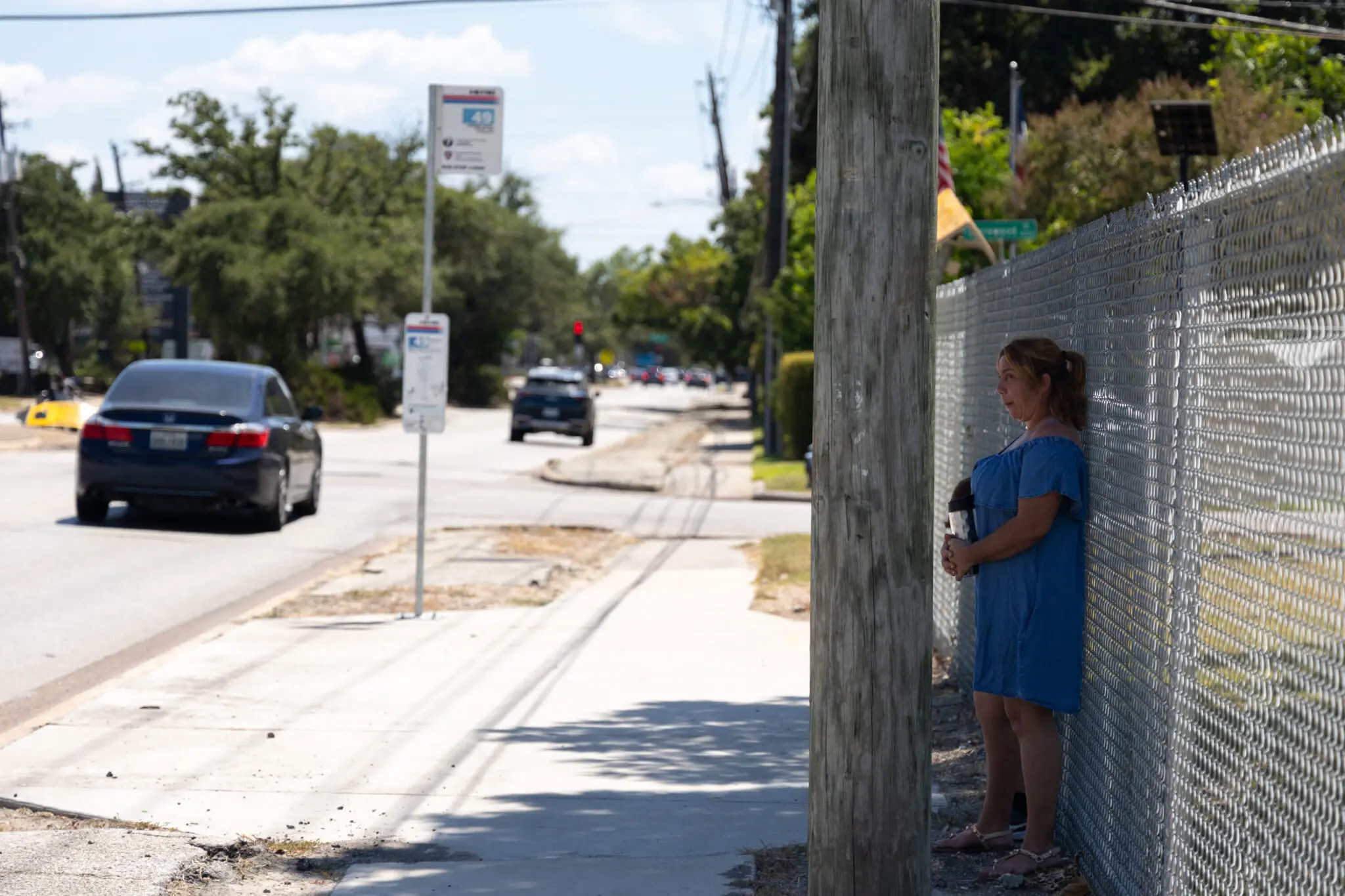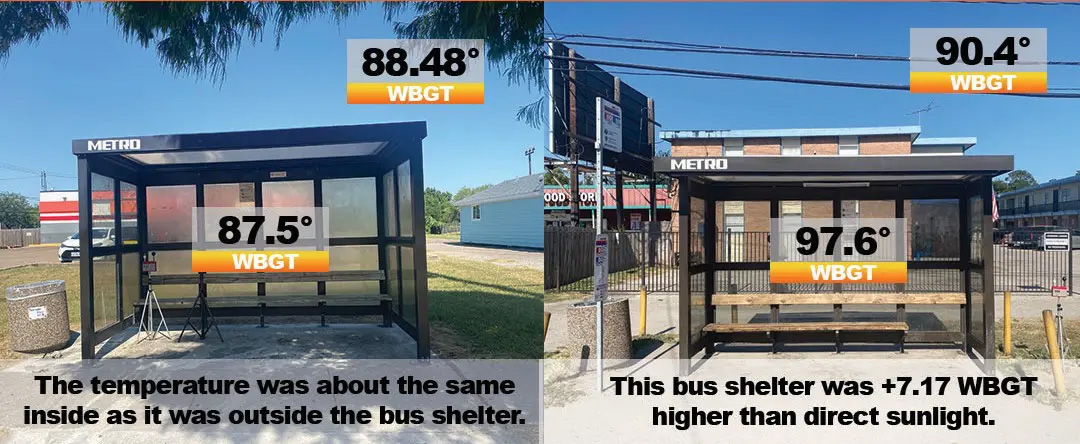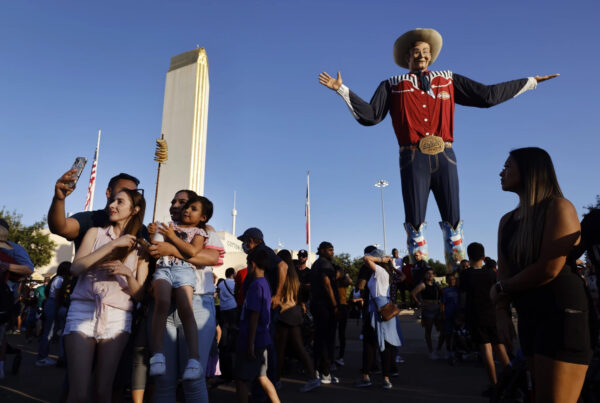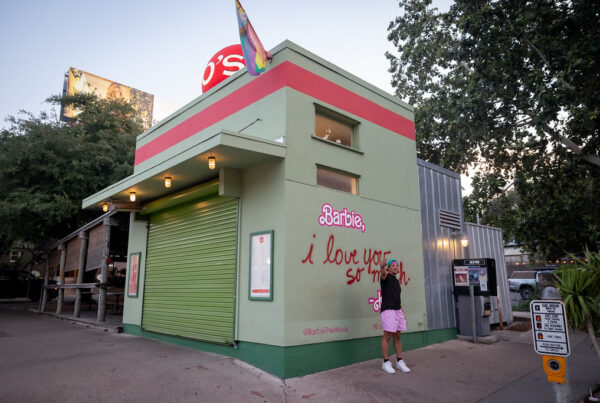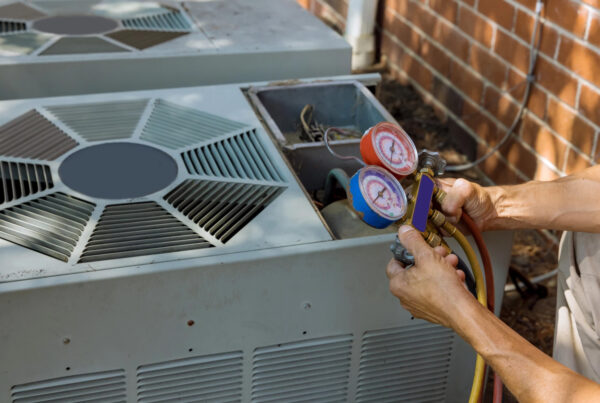Read part one of this investigation here, and part two here.
“The second hottest summer on record.” That’s according to 2023 data from the state’s climatologist.
The average temperature between June and the end of August was 85.3 degrees in Texas.
For Texans having to spend time outside that, the heat can take a toll. Many of those include folks taking mass transit, and that is the subject of a recent investigation by two reporters at Houston Public Media.
Sara Willa Ernst and Katie Watkins are behind this project called “Hot Stops: How Houston Bus Stops Get Dangerously Hot.” They joined Texas Standard to discuss. Listen to the interview above or read the transcript below.
This transcript has been edited lightly for clarity:
Texas Standard: Katie, let’s begin with you. Can you explain what Houston’s bus system is like? How big is it? Who are its main riders? How many people rely on it?
Katie Watkins: So the system in Houston is actually pretty big. It covers a 1,300 square mile area in the greater Houston area, and it has more than 9,000 bus stops, which were the focus of our investigation.
And I know Houston has a reputation for being a very car-centric city. But even so, you know, people take the bus around 4 million times a month and a lot of people that take the bus, they rely on it. You know, almost 70% take it at least five days a week.
Sara, in your reporting, you wanted to find out just how hot Houston’s bus stops are. What was the inspiration for this in the first place?
Sara Willa Ernst: So we talked to a couple of bus riders who talked about, in some instances, the bus shelters being even hotter than standing in direct sunlight. And that was very much the inspiration for going to bus stops, taking temperatures and seeing whether that actually mirrored the temperatures we were taking. And it did in a handful of cases.
We found that bus shelters made the heat worse. We also were curious whether or not, you know, these bus shelters, whether or not they were providing shade, reached dangerous thresholds in terms of being at high risk or extreme risk for heat illness in the temperature readings that we took.
The majority did reach those thresholds, 73% of our temperature readings. And we took temperature readings during some of the hottest months of the year – late July, early August – in the 12:00 hour and the 4 p.m. hour.
What was the threshold for the dangerous reading?
Ernst: So we measured in a metric called WBGT – wet bulb globe temperature – and that incorporates solar radiation in the way that regular temperature that you see on daily forecasts doesn’t. And so anything above 90 WBGT is considered an extreme threat for heat illness.
I know 90 doesn’t sound very high in kind of colloquial temperature, but it actually has a pretty different meaning when it comes to WBGT.
Well, now, Sara, you spoke with people who ride the Houston bus system. What do they tell you? Were they reporting health problems as a result of waiting for the bus?
Ernst: Yes. So we spoke to one woman, her name is Glory Medina. She lives in the Gulfton area which is really transit-needy and has some of the highest temperatures in Houston. And she has experienced heat illness multiple times, including fainting. Last year, it wasn’t only her, but it was also her daughter who has overheated while they’ve taken the bus.
We also sent a request out to the Houston Fire Department and we found that in this year, in June and July, there were at least 16 emergency calls for temperature-related problems. These were people who are either at the bus stop or on the bus who are calling 911.
And even since then, we’ve heard stories from people who’ve submitted our survey who have kind of reached out with emails saying that they, too, have either fainted at a bus stop or have kind of experienced these more mild problems, such as headaches, dizziness, migraine and skin irritation.


